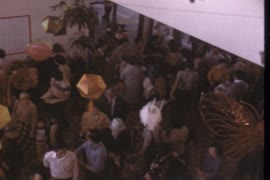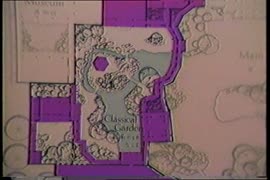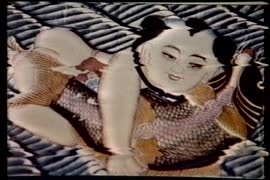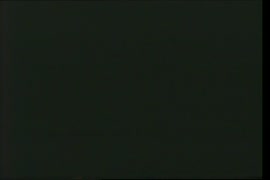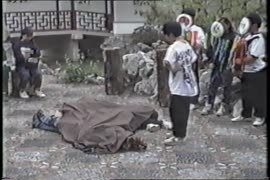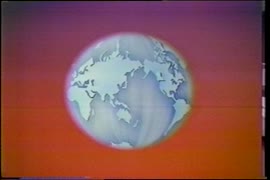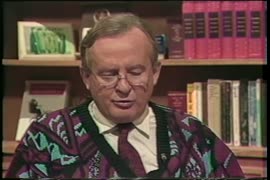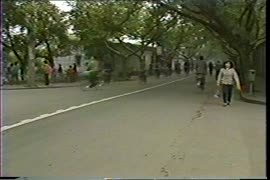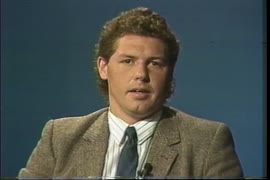Item is a videocassette containing a documentary about the city of Vancouver.
The main focus of the documentary as a whole is the social and cultural life in the city and the relationship between the people and their surroundings in 1986, the centenary year. The visual elements are a combination of historical photographs, hand drawn illustrations, historical moving image footage, and moving image footage shot by the filmmakers between 1985 and 1986. Music with a narrator speaking in the foreground accompanies the visuals.
The early history of Vancouver is told through stories about George Vancouver naming point Grey and Burrard channel and meeting First Nations people, John Deighton (“Gassy Jack”) opening his saloon, the first city council meeting, and the arrival of the first CPR train from Montreal and ship from Yokohama.
The discussion of modern life in Vancouver that makes up the bulk of the documentary is roughly divided into sections. The first section discusses modern commerce, including shipping, transportation, forestry, fishing, and tourism. The second section discusses cultural life, including the natural beauty of Stanley Park, street scenes in Chinatown, the expo grounds and the SkyTrain, street musicians, children playing at a water park, and a football game at BC Place.
The third section focuses on the immigrant experience and how a diversity of cultures enriches life in the city. This point is illustrated with scenes of new Canadians at a citizenship ceremony, Tai Chi in Queen Elizabeth Park and Chinese dragons in Chinatown, the Nitobe Memorial Garden and the Powell Street Festival, a Sikh wedding and street scenes of Main Street in South Vancouver. It also explores the dark side of the immigrant experience, discussing the 1907 anti-Asian riots, the forced removal and internment of Japanese Canadians during World War II, and the Komagata Maru incident. The section also addresses Indigenous resistance and cultural resilience.
The fourth section deals with Vancouverites' love of being outside, with footage of outdoor aerobics and other fitness activities, relaxing on the beach and ‘being seen’, outdoor cocktail parties and dining, a family picnic in the park, outdoor theatre, and sailing.
Okexnon Films Inc.


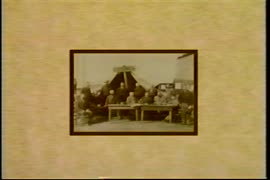



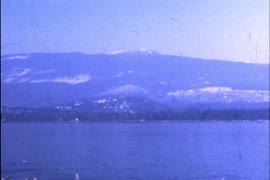
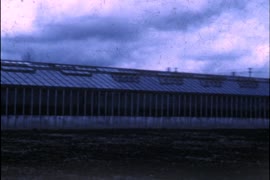
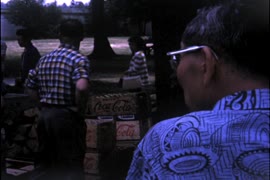
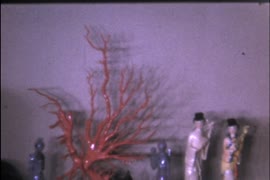

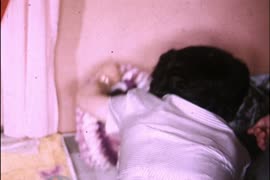

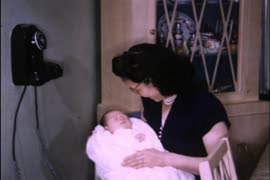




![P.N.E. Parades 50, 51, 52, 53, and 56 - P.N.E. Ground [s] 60 and 61](/uploads/r/null/7/8/d/78d8465ae3f7079049b58917c5136e9818f8052c04c55b801e7504b21a747485/3affd1f7-67f6-475f-a656-77fee42e9870-2012-010_142.jpg)
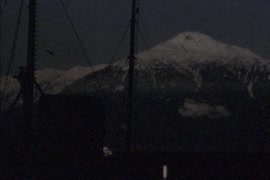
![L[as] V[egas] and Air Travel to Van. Airport - Sept, 1973 and UBC Japanese Garden](/uploads/r/null/7/2/3/7236623b840d44ebec7bcabd6c23aa2b980981867f038dd227a30268c6418fbe/3c0cf91f-ad59-4a4c-99ae-801a909b7a02-2012-010_142.jpg)
![Seens [scenes] of Van[couver], Capilano, Stanley Park](/uploads/r/null/1/3/b/13bc9013786c37378f12ed8a438df461807fab1a389b9e9c2896f171e1c9e03f/b640bf28-47ef-404b-9944-eeb4bd5eeda9-2012-033_142.jpg)

![Chinese National Conven[tion] 9-7-75](/uploads/r/null/c/6/b/c6b2e6cab569ccc8a2a5d75c53976ab4bd8272d495432caa3fc8f03715b0bff2/42d09b8b-f7bc-44e3-a832-af825d7fca74-2013-033_142.jpg)


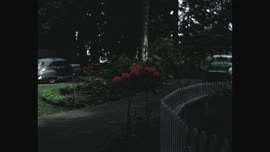

![[Boundary] Bay - [Tsawwassen] Ferry - Gee How Oak Tin Assn - Nature Bridge of Yoho Park - Lake [L...](/uploads/r/null/e/e/2/ee24a4bc78d5278ea21e442758cf103147bb1372f49aa1028ee62e0b3c5facea/d9ffdf67-862c-48dd-bf96-51521e21d7b6-2013-033_142.jpg)
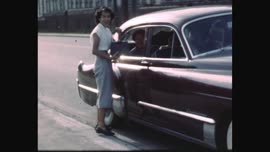


![Stanley Park and [North] Shore - Horseshoe Bay and Malahat Hwy. - Mr. and Mrs. Tom Fowlers to Vic...](/uploads/r/null/5/c/6/5c697861893c630042fb5a2fac0aacaf294c63237840781ebc9a04eee647792b/7acd8a3b-1f6c-490c-8ded-ee944db96cb5-2013-033_142.jpg)



